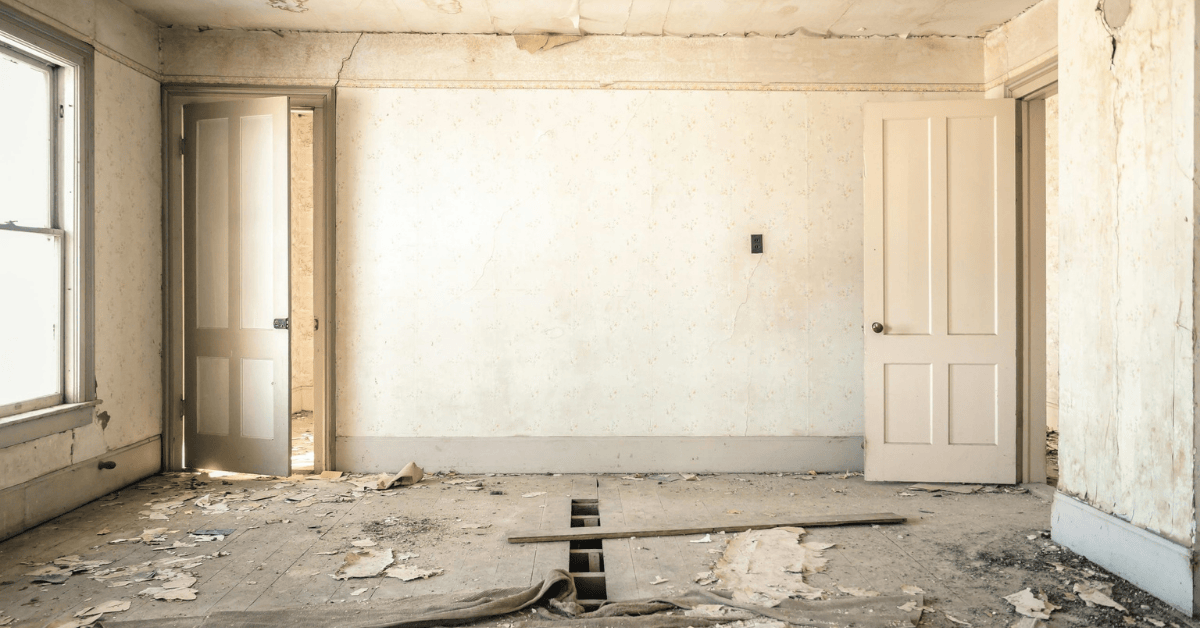When Disaster Strikes: Your Ultimate Guide to Home Disaster Recovery Services (with Emergency Moving Assistance)

Imagine waking up to the wail of sirens, a notification flashing about an approaching storm, or the acrid smell of smoke filling your home. Suddenly, your peaceful haven is facing a disaster. In these moments of chaos, home disaster services become more than just an amenity; they become your lifeline.
Disaster recovery services go beyond simply moving your belongings; they offer expert assistance and essential resources to navigate the overwhelming realities of a disaster.
From emergency packing and long-term storage solutions, home disaster services can ease the burden. Emergency moving services can help you recover with greater speed, efficiency, and peace of mind.
Why Disaster Recovery Strategy Matters
The immediate chaos of a disaster can be overwhelming. However, the stress doesn’t end with the emergency response. The true impact of a disaster unfolds over time, potentially affecting your finances, emotional well-being, and even your day-to-day life.
A plan for disaster recovery can act as your guiding light through the fog of uncertainty. Here’s why prioritizing disaster recovery planning is crucial for homeowners:
1. Protecting Your Precious Possessions: Disasters can wreak havoc on your belongings. Natural disasters can damage physical objects like furniture and electronics. More devastatingly, it can destroy cherished memories like family heirlooms and photographs. Having a well-defined disaster recovery plan ensures you have the resources and support to salvage and restore as much as possible.
2. Minimizing Financial Losses: The cost of disaster recovery can quickly add up. Expenses can include repairs, replacements, temporary housing and storage. A proactive approach helps you reduce these costs by accessing insurance benefits efficiently and utilizing cost-effective recovery solutions.
3. Safeguarding Your Physical and Mental Health: The stress and anxiety associated with a disaster can be immense. By having a plan in place, you reduce the mental burden of navigating the recovery process. A disaster recovery plan allows you to focus on your well-being and the safety of your loved ones.
4. Restoring a Sense of Normalcy: Disasters can disrupt your life in countless ways. Having a recovery plan empowers you to take control of the situation, expedite the restoration process, and rebuild your life with greater confidence and resilience.
Investing in disaster recovery may seem like a distant concern, but proactive preparation is key to minimizing the long-term impact of unforeseen events. By understanding its importance and taking action today, you can create a safety net that protects your family, belongings, and peace of mind.
What are the Different Types of Disaster Relief Programs?
There is a broad range of assistance provided to individuals and communities after a disaster strikes. Disaster relief program efforts play a crucial role in immediate recovery.
However, it’s important to understand their limitations and recognize why they may not be enough. Here’s a breakdown of the main types of disaster relief and their limitations:
1. Emergency Response: Emergency services include providing food, water, and shelter. Search and rescue operations and establishing medical care are other elements of emergency response services. While crucial in the immediate aftermath, it is often temporary and might not address long-term needs like rebuilding homes or infrastructure.
2. Financial Assistance: Grants, loans, and insurance payouts aim to help individuals recover financially. However, access can be limited by eligibility criteria, bureaucratic processes, and the scale of the disaster compared to available resources. Additionally, financial aid might not cover all losses and leave individuals struggling to fully recover.
3. Infrastructure Repair: After a disaster, it’s necessary to restore damaged roads, bridges and utilities. While vital for community recovery, it can be a slow and expensive process.
How to Build a Robust Disaster Recovery Plan
Disasters come in all shapes and sizes. While their nature varies, one thing remains constant: the need to prepare for worst-case scenarios. A disaster recovery plan acts as your road map, driving you through the chaos, and facilitating a smoother recovery. Here’s how to build a personal disaster recovery plan:
Assess Your Risks
- Identify Potential threats: Consider your location and research common disasters in your area. Are you prone to floods, hurricanes, or earthquakes? Understanding the risks helps you prioritize your planning efforts.
- Evaluate Your Vulnerabilities: Analyze your home’s potential weaknesses. Does it have a basement prone to flooding? Are outdated electrical systems at risk of overload? Identifying vulnerabilities allows you to address them through mitigation strategies.
Create an Inventory and Prioritize
- List Your Belongings: Create a comprehensive inventory of everything you own, including furniture, electronics, and sentimental items.
- Categorize and Prioritize: Classify your belongings based on importance. Essentials like medications and documents come first, followed by valuable items and replaceable possessions.
Assemble Your Emergency Kit
- Stock Essentials: Gather vital supplies like non-perishable food, water, a first-aid kit, flashlights, batteries and a radio. You may also want to consider local needs like hurricane shutters for coastal areas.
- Don’t Forget Sanitation: Your emergency kit should include hygiene items like soap, toilet paper and hand sanitizer.
- Personalize It: Tailor your kit to specific needs. Family members may need medications or you need supplies for your pet.
Craft Your Evacuation Plan
- Identify Escape Routes: Choose multiple evacuation routes in case one becomes blocked. Practice them regularly with your family, especially if there are mobility limitations.
- Plan for Pets and Valuables: Determine evacuation plans for pets and designate a safe location for storing critical documents and valuables.
- Communication Plan: Establish a communication plan with family members, including designated meeting points and contact information.
- Regular Review: Revisit your disaster recovery plan annually and update it as circumstances change.
- Moving Budget: Plan your moving budget. Consider potential emergency moving costs and long-term storage needs.
Secure Your Documents and Data
- Physical Copies: Keep essential documents like passports, insurance policies and IDs in a waterproof container that’s readily accessible.
- Digital Backups: Regularly backup important data on external drives or cloud storage solutions.
Know Your Insurance Coverage
- Review your Policy: Understand your coverage level for different types of disasters and their limitations. You may want to determine if you need additional coverage like flood insurance.
- Document Damages: Take photos and videos of your property before a disaster to facilitate insurance claims if necessary.
Seek Professional Help
- Research Emergency Movers: Compare quotes from multiple moving companies and ask about their emergency response protocols.
- Understand Emergency Moving Services Available for You: Be upfront about your situation and needs to ensure they can efficiently handle your job.
By crafting a comprehensive and dynamic disaster recovery plan, you empower yourself to face unforeseen events with greater confidence and minimize the impact on your life and property. Preparedness is key to navigating the challenges of disaster and ultimately bouncing back stronger.
How Emergency Movers Can Help with Disaster Recovery
Disaster doesn’t wait for schedules. Sometimes immediate action is required to protect your belongings and ensure safety. This is where emergency movers come in. A same-day moving company offers last-minute moving services specifically designed for urgent situations.
When to Consider Emergency Moving
Natural disasters like fire, flood, or other threats like power outages often facilitate an emergency move. You may also want a moving company if you are looking to relocate valuable belongings. A house under renovation may also require temporary storage solutions which last-minute movers can handle.
Benefits of Emergency Moving Services
- Speed and Efficiency: Same-day movers are available on short notice and are often ready within hours of your call.
- Expertise in Difficult Situations: Emergency movers are trained to handle fragile items and navigate challenging scenarios.
- Stress-Free Assistance: They take care of the heavy lifting and packing that allows you to focus on other critical tasks.
Taking Action Before and After: Preparedness and Moving Logistics
While emergency moving offers a crucial safety net, proactive preparation significantly impacts your recovery journey. Here’s how:
Pre-Disaster Packing and Storage
- Categorize and Pack: Organize belongings by category (essential documents, electronics, clothing) and pack them in sturdy containers labeled clearly. Consider opting for packing services for efficiency.
- Important Documents: Keep critical documents readily accessible in a waterproof container. You can also make digital copies for online recovery.
- Valuable Storage: Consider storing irreplaceable items in secure off-site facilities or fireproof safes.
Post-Disaster Logistics
- Damage Assessment: Upon returning home, assess the damage and prioritize restoration needs. Document everything for insurance purposes.
- Content Restoration: Professional companies can help restore water-damaged items, clean smoke-affected belongings, or perform mold remediation.
- Temporary Housing: Use last-minute movers to transport belongings to temporary accommodation while repairs are underway.
- Inventory Check: Compare your pre-disaster inventory with the remaining items to identify losses and claim insurance accordingly.
- Insurance Claims: File insurance claims promptly and document all communication with your insurance company.
- Emotional Support: Disasters can be emotionally draining. Seek support from loved ones or mental health professionals if needed.
Beyond Emergencies: Long-Term Resilience and Moving Solutions
Disaster recovery extends beyond the immediate response. Building long-term resilience and utilizing strategic moving solutions strengthens your preparedness for future unforeseen events.
Building Resilience
- Mitigation Measures: Take steps to mitigate future risks. Install flood barriers, reinforce your roof, and invest in surge protectors to minimize potential damage.
- Disaster Kits: Maintain and update your disaster kits with essential supplies and regularly rotate perishable items.
- Community Engagement: Stay informed about local emergency plans and participate in community preparedness programs.
Strategic Moving Solutions
- Storage Rentals: Consider long-term storage solutions for seasonal items or rarely used belongings to declutter your living space and facilitate evacuation if needed.
- Professional Packing: Invest in professional packing services for delicate or valuable items during future moves, ensuring their safe transport and storage.
- Specialized Movers: For specific needs like piano moving or antique transportation, research specialized moving companies with the expertise to handle such assets.
- Finding the Best Solution: When seeking moving services, prioritize reputable companies with transparent pricing, clear communication, and a proven track record in handling emergencies.
At Armstrong, we are a trusted partner for home moving. Our experienced and reliable movers can handle your disaster recovery and temporary storage needs. Adding the Armstrong team to your disaster recovery strategy ensures that you have someone on your side during a stressful time.
By incorporating these strategies into your home disaster recovery plan, you empower yourself to face unforeseen circumstances with confidence and minimize the impact on your life and belongings.
Disasters may be unpredictable, but effective preparation and the right resources can significantly reduce the chaos.
